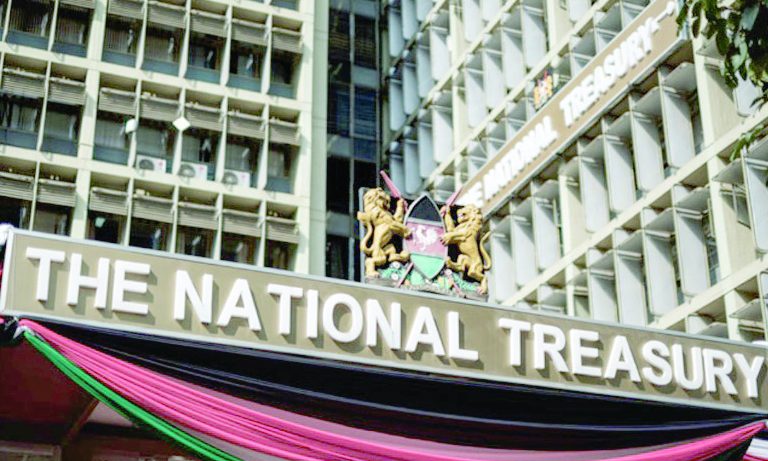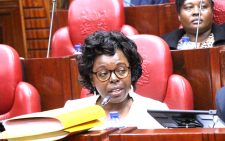Concern raised as recurrent beats development spend

The 2024/25 supplementary budget allocated a significantly larger portion of funds to recurrent spending, raising concerns about the country’s long-term development agenda.
At a time when the country needs to spur development by creating an enabling environment for the private sector and Kenyans to thrive, the government set aside only Sh590.08 billion for development expenditure while recurrent expenditure got Sh1.72 trillion in the 2024/25 supplementary budget.
The two areas of financing respectively account for 25.4 and 74.6 per cent of the total Sh2.3 trillion supplementary budget as total ministerial budget, excluding the Sh1.2 trillion which is set aside for Consolidated Fund Services (CFS).
The total budget hit the Sh3.5 trillion mark.
National Treasury has stated its intention to increase development expenditure to 30 per cent of the national budget, the current allocation falls far short of this target.
“To address this, the National Treasury will be implementing expenditure realignments to ensure that over the medium term, a minimum of thirty percent of the National Budget shall be allocated to Development Expenditure in compliance with the fiscal responsibility principles as set out in the Public Finance Management Act, CAP 412A.”
This growing imbalance reflects a misallocation of funds and a focus on non-essential spending, such as travel and allowances, at both the national and county levels at the expense of development.
This has led to a situation where crucial development projects, vital for attracting investment and creating jobs, are underfunded.
Additionally, even counties seem to be turning a blind eye on the issue of recurrent expenditure as both counties and ministries splurge on non-essentials such as the travel, allowances and hospitality generally forgoing financing development projects stimulating the expansion of pending bills.
“The gross Ministerial Expenditure in the FY 2024/25 Supplementary Estimates No. II has decreased by 2.5 per cent from the original approved Ministerial Estimates. However, the Recurrent Expenditure has increased by 5.9 per cent while the Development Expenditure has decreased by 20.9 per cent,” the statement reads.
Adding to the problem, county governments often spend a disproportionate amount of their allocated funds on wages and benefits rather than development.
In the latest budgetary policy statement by Treasury, the total expenditure on wages and benefits during the financial year amounted to Sh209.8 billion, accounting for 47.6 per cent of the total Sh440.7 billion revenues collected.
“Most County Governments are spending a larger portion of their revenue on wages than the recommended threshold. Three counties namely: Tana River, Narok, and Kilifi were able to maintain their allocation to wages and salaries below the threshold, the statement reads in part.
University of Nairobi economist Prof Samuel Nyandemo blames the low development rates in the country to misallocation of funds by respective heads in both the national and county governments.
“The government raises enough revenue that can be able to sustain the economy even without the need of borrowingsbut the main challenge is the issue of priorities,” he said during an interview with Business hub.
Reports also highlight the growing issue of pending bills, particularly within state corporations, further straining the government’s financial resources.
Experts suggest that the banking sector has the capacity to finance these projects, but the government’s reliance on external borrowing persists.
In her report, the controller of budget, Margaret Nyakang’o flagged numerous state agencies and county governments as the biggest spenders in this category.
“The County Assemblies incurred shs.290.23 million on MCAs’ sitting allowances against an approved annual FY 2024/25 budget allocation of sh.1.88 billion, translating to 15 per cent of the budget,” she said.
In terms of pending bills, she reports that state corporations appear to be the highest contributors to the pending bills leading with Sh 410.69 billion which represents 78 per cent of the total Sh 528.36 billion as of September 30, 2024.
In the last supplementary budget, in July last year, The Recurrent Expenditure decreased by 2.1 per cent while the Development Expenditure decreased by 16.4 per cent.
This was within the allowable threshold for variation of a Supplementary Budget from the original Budget as appropriated by Parliament in accordance with the requirement of the Public Finance Management Act, (PFMA) CAP 412A.
From these reports, it becomes evident that development projects lack much significance to the Kenya Kwanza government which prioritizes personal benefits over service delivery, even though a slight fraction of development projects can be reported.












